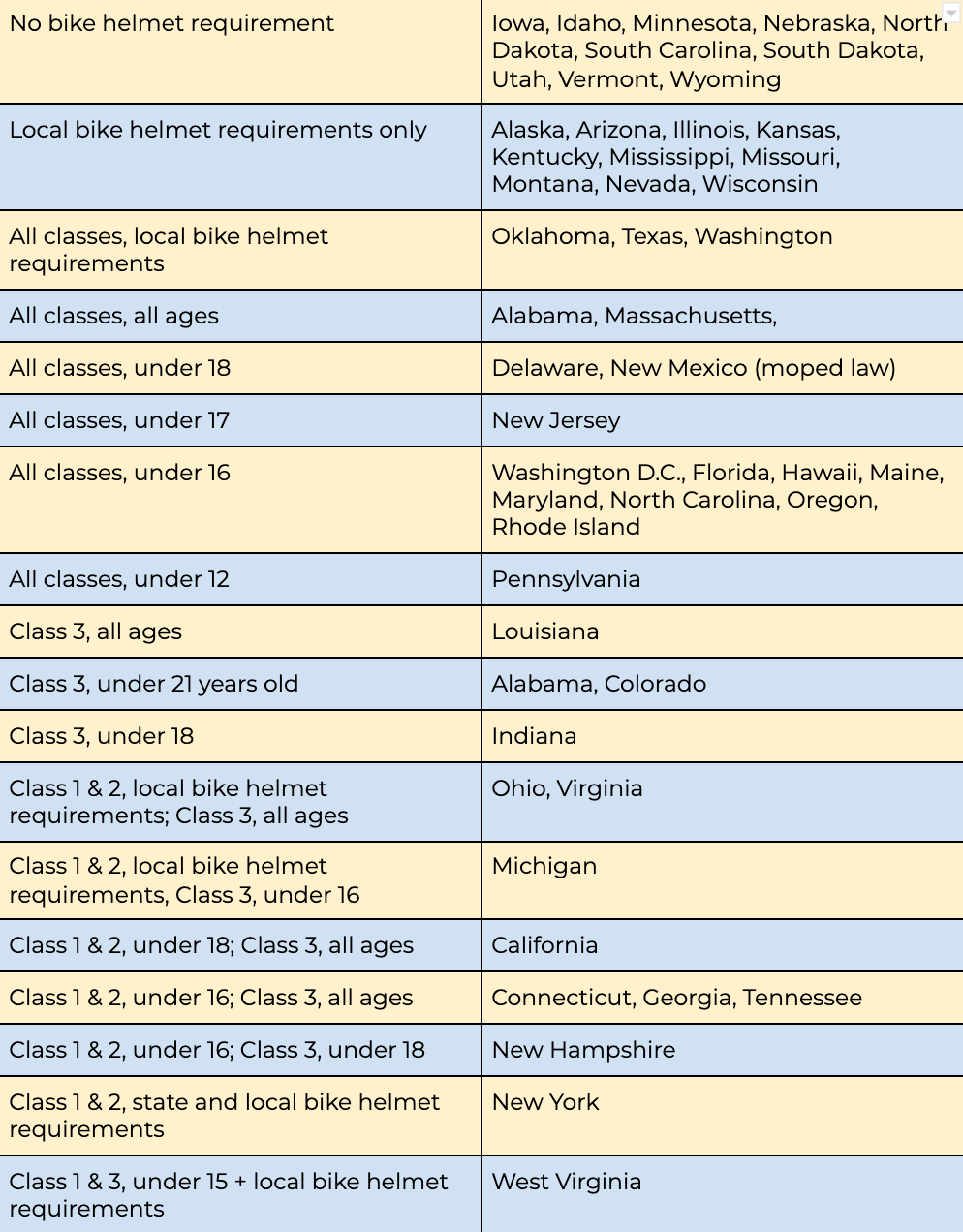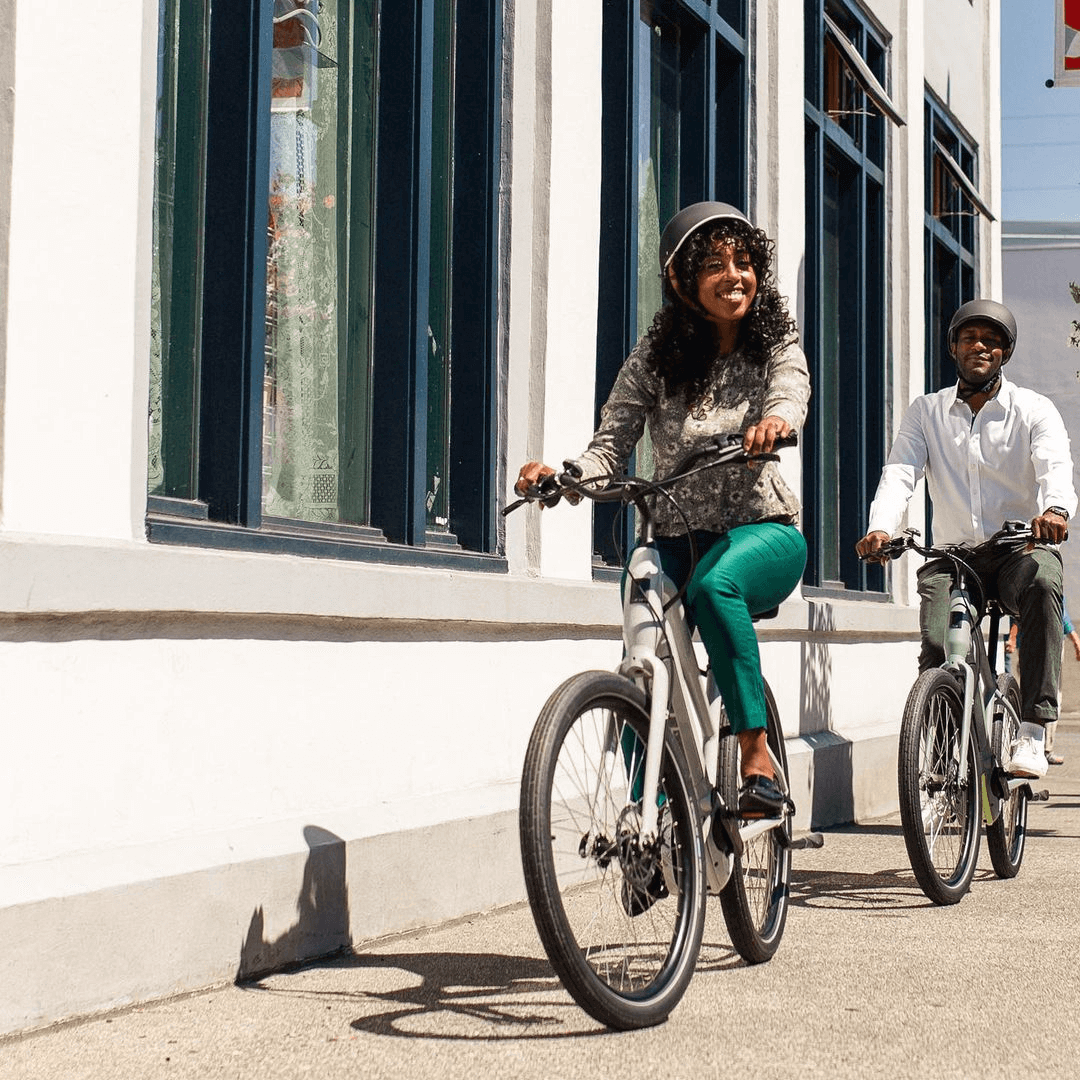
PHOTO COURTESY OF @storybikes TAKEN BY @ginomascardo
Here’s a fun fact that we discovered while scouring the edges of the internet researching this article: The first electric bike designs were patented in 1895 by a forward-thinking inventor in Ohio named Ogden Bolton, Jr. It’s clear that Ogden was onto something all those decades ago. E-bike ownership has gained serious momentum in the last decade. So much so that Deloitte reported more than 400,000 e-bikes were sold in 2018. Ogden would be proud!
So, why the big boost in electric bike interest? For starters, the commute. Americans spend an average of nearly 30 minutes commuting by car each way. In some large cities, that commute is even longer (LA, we see you). Until we reach a Jetson-esque era where we’re flying aerocars around, the best way to breeze through traffic is by biking or riding an electric bicycle. An appealing benefit of riding an e-bike is the pedal-assist capability (aka pedelec) that allows you to ride at higher speeds. That means you’ll arrive at your destination faster yet you won’t be covered in sweat or need to awkwardly look for a place to change clothes.
We’d be remiss not to mention climate change. It’s another major reason why commuters and other types of riders are turning to more eco-conscious modes of micro mobility. Electric bikes and other e-powered options such as electric scooters and electric skateboards are greener alternatives to gas-powered vehicles that release harmful carbon emissions into our precious atmosphere.
There’s no short answer to this question. Each state has its own bicycle helmet laws for e-bikes. It also depends on what type of e-bike that you ride. Here’s a breakdown of the class types:
And here’s a handy table to help you determine whether or not your state requires the use of a bike helmet while you ride your e-bike.

Ready to find the best e-bike helmet? Before you cover your dome, cover your bases with these facts and features. It should provide you with just enough info to make purchasing a helmet online that much easier.

PHOTO COURTESY OF @izipusa
Bike helmets are made out of two types of materials: expanded polystyrene foam and polycarbonate. EPS has served as the staple foam used in helmet liners. Polycarbonate is what’s used to make the shell and is fused onto the EPS lining. Both materials are generally lightweight and offer the right kind of protection (more on safety soon). E-bike commuters often prefer light and portable helmets since they’re always on the go.
Besides weight, fit is another important characteristic to consider while helmet shopping. Many modern helmets feature a dial fit system to ensure a perfectly snug and secure fit. This nifty feature is a substantial upgrade from helmets of yesteryear and is especially excellent for people who fall in between helmet sizes. Not sure what size helmet you wear? It’s easy to measure your dome. Just follow these three steps:
No matter the size, all helmets are built with ventilation — some more than others. Vents control how much airflow your dome is receiving while you ride. Riders in warmer climates might prefer more vents and vice versa for those in cooler climates. You can always wear a cap underneath your helmet to keep warm if needed.

PHOTO COURTESY OF @doogieroux TAKEN BY @brienhollowell
When you think about what makes a helmet the best helmet, design or style often comes to mind. For instance, cyclists tend to choose function over fashion because it’s more about being aerodynamic than looking cool (no shade toward cycling helmets though!). E-bike riders have a slightly different agenda than, say, a casual cruiser or mountain biker.
That said, some mountain bike helmets offer full-face coverage, which could be ideal. A full-face helmet features face and jaw protection. Some advanced full-face helmets actually have a detachable jaw piece. Most of them are also designed with visors that can be flipped up or snapped close.
Helmets that feature thoughtful additions like LED lights, visors, and anti-theft security are worth the extra splurge, especially if you’re going to use your e-bike as a daily driver.
New safety standards have emerged as more riders are taking to the streets on electric bicycles. With pedelec, or pedal-assist, capability, e-bikes can reach higher speeds than road bikes and mountain bikes. In the Netherlands, the NTA-8776 certification applies to helmets that meet a certain level of protection for both speed and broader head coverage. Typically, these types of helmets are larger, contain more ESP and offer over-the-ear coverage. Brands like Abus, Giro, and Polisport offer at least one model that meets the NTA-8776 impact protection requirements.
Currently, there are no specific e-bike helmet certifications in the United States other than the Department of Transportation (DOT) motorcycle helmet standard. That said, all cycling helmets sold in the U.S. must pass Consumer Product Safety Commission standards. If your helmet doesn’t have a CPSC label, don’t buy it. Many companies go above and beyond by seeking certifications from reputable organizations like Snell and ASTM. Other countries have their own standards like NTA, CEN and others.
Unsurprisingly, some e-bike riders choose to wear a lightweight motorcycle helmet because it offers more protection while riding an e-powered bike. When in doubt, look for a helmet with MIPS technology. MIPS stands for multi-directional impact protection system. It provides protection against rotational forces caused by falling at an angle (which is the most common way bike riders fall). MIPS works by allowing the head to move the tiniest bit (10-15mm) inside the helmet upon impact. This helps prevent brain-threatening injuries like concussions.
You can wear a “regular” bike helmet while riding your e-bike. If your e-bike goes faster than 20 MPH (class 3), you might opt for a helmet that has more head coverage and meets Dutch NTA-8776 standards. Otherwise, a lightweight bike helmet or MIPS helmet has you covered.
Safety is paramount when riding any kind of bike, but especially electric bikes because you travel at faster speeds. We know e-bikes are more environmentally friendly, help cut down commute time, and even keep you from showing up to your destination drenched in sweat. At the time of this writing, there’s no single e-bike helmet law in the U.S. — every state has its own law. The U.S. hasn’t yet implemented any kind of e-bike helmet safety standards, but every “regular” bike helmet sold in the U.S. needs to have the CPSC label on it.
When searching for the best helmet, consider weight, fit and thoughtful functionality like anti-theft security to lock your helmet with your bike, a rear light for better visibility, and a dial fit system for a perfect fit. An MIPS helmet will offer better protection against brain-related injuries like concussions.
With these tips and more, you’ll be cruising around safely in no time! While you’re here (and since you read this far), browse our Thousand helmets. They consistently rank on “top” helmet lists, including best e-bike helmet lists.

